With the end of the decade is drawing near, it’s time for me to revisit one of my favorite franchises of this last decade – and my all times as well – Monogatari series. Monogatari series is one rare show that despite its extreme visual style and convoluted storytelling, it still draws a delicate fan-following and becomes one of the most popular and enduring franchises the last ten years have to offer. With an “Off-season” is around the corner (of which there is no official announcement for anime adaptation as of yet but hey, do you seriously think that Shaft will get pass this golden egg? – and of which I’m mixed about: it’s time to move on), the 10-year era from 2009-2019 follows the completion of Monogatari’s main arc, spawning 15 plus mini-arcs and an entire cast larger than a football field. Monogatari has its ups and downs for sure, and we will get to that in this ranking of all the Monogatari arcs, from worst to best.
Of course, as per any ranked list, there’s some rules that needed to mention here. Some arcs that consists of several mini stories – will be included as one (like the Sodaichi arc). This gets tricky, though, when you scroll back to the Bakemonogatari season, which contains 5 mini-arcs of the same theme, and the Japanese novels and English publishions differ in the way they arranging (split into 2 in the former and into 3 in the latter). I will go with NisiOisin’s original intention – 2 small arcs. ONA’s Koyomi Vamp and trilogy-movie Kizu are included as well, that make it a total of 18 arcs. Without further ado, let’s chase them down:
THE SKIPPABLES
18. Koyomimonogatari
[Koyomi Stone -> Koyomi Dead] / 12 short episodes
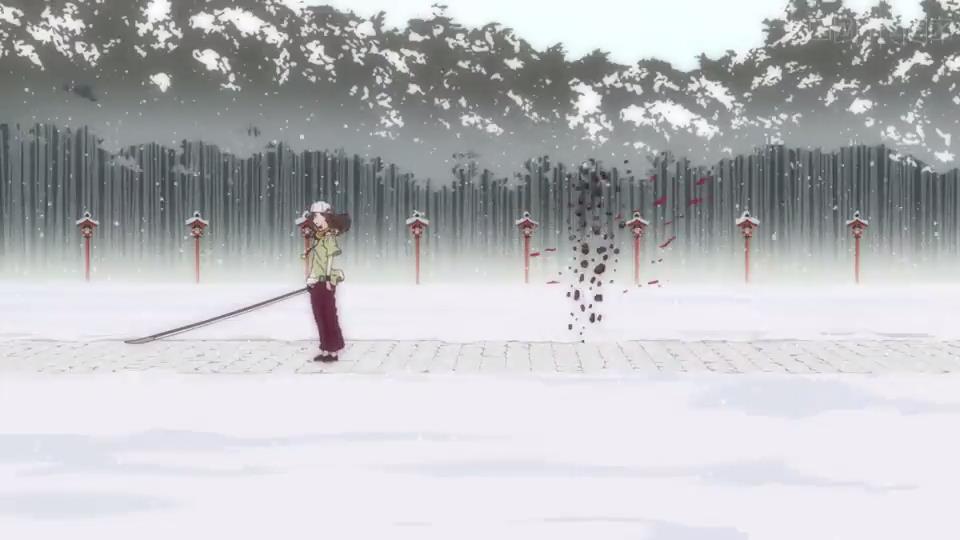
If there is one bad tendency of Monogatari series (it has quite a few, which I will run them down later), it’s that the series is too fond of its characters, to the point it doesn’t mind just spending time with them, even without any context whatsoever. This is essentially the existence of Koyomimonogatari, which contains 12 stories about Koyomi encountering with each girl over the course of 12 months. Except from the final chapter which is relevant to the main story (thus the only one you’ll need to watch), the rest is filler. To make it worse, the girls often shine because they have a personal arc. In this case, they just tab on their dominant traits and their usual banters with Koyomi and this results in them being one-dimensional. “This novel was written on a 100% out of whim.”, said NisiOisin, and that pretty much sums up this mobile-app adaptation, although he pretty much says this to all of his novels so take this with a grain of salt.
17. Tsukimonogatri
[Yotsugi Doll] / 4 episodes
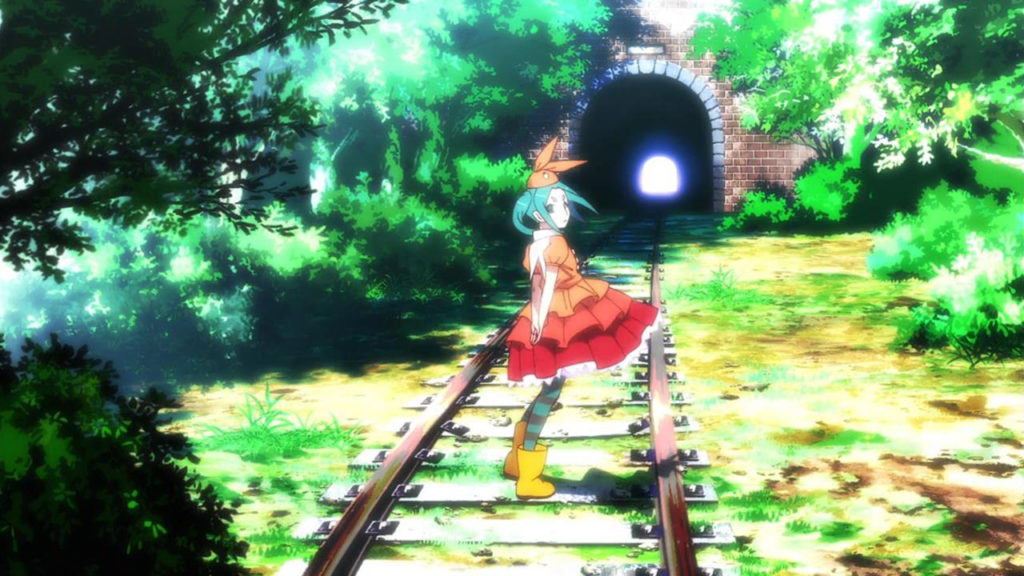
Tsuki suffers from carrying the weight of the main arc and functions less as an independent chapter. The arc raises an interesting question about Araragi’s vampirinism, but proceed to do very little with that. The fact that it features Yotsugi as main character, whom is my least favorite girl (she’s grown on me since but she’s still the least favorite) doesn’t really help either. In addition, there is an extended bath scene between Araragi and Tsukihi which functions more as a reply to the infamous Toothbrush scene and one I consider my least favorite sequence of an entire franchise (another bad tendency of Monogatari series: fan-service is dealt up to 11 – sometimes I can get pass it, most of the time I just scratch my head). It’s also a curse for Tsukimonogatari to release right after a string of many great Monogatari arcs, so it’s unavoidable that this chapter feels like a massive letdown.
16. Zoku Owarimonogatari
[Koyomi Reverse] / 6 episodes
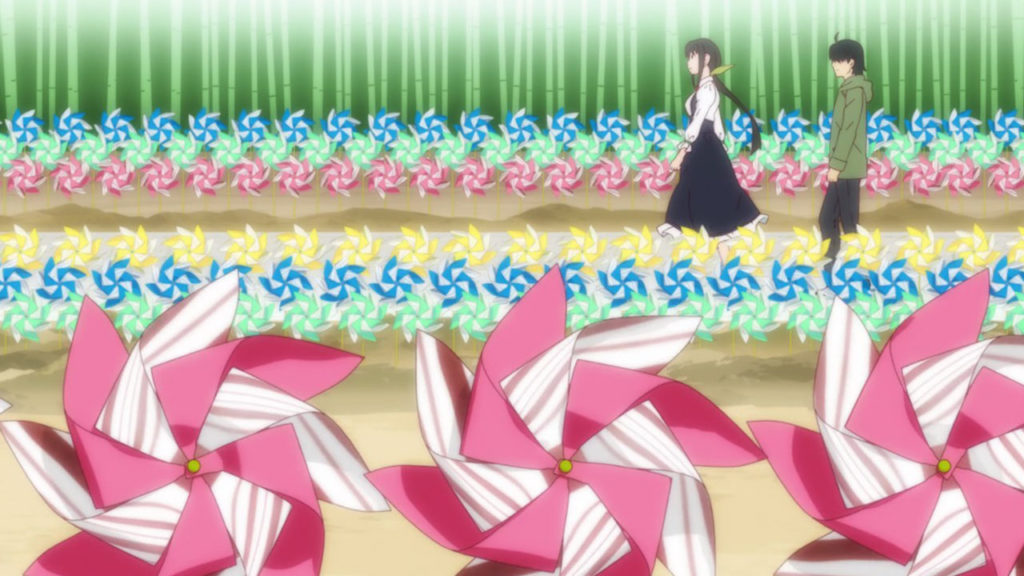
In essence, Zoku Owarimonogatari doesn’t need to even exist. It’s a side-story of an aftermath, where everything is already resolved. Even in its prologue, it acknowledges that very fact. Within the context of a side story though, this chapter works. We follow Araragi to a mirrored world where the girls he encounter acts a little more eccentric than what they usually behave – and for me that’s one of the reasons/ joys to watch this arc. The girls act out-of-their-own-established-tropes isn’t without any context, given that these traits are their vulnerable sides. The ending is nice if a bit underwhelming, but I have issues with how it portrays Sodachi’s character (she has no trait at all except for being a girl next door room).
Also, I have my suspicion but this final arc further re-establishes that: Senjougahara’s role (or the lack thereof) within the series. She’s clearly underwritten, to the point not even the main character in her own arc. The series uses her mostly for Araragi’s romance (dating) or for Araragi’s emotional support – hence the reason why she’d disappear for an entire arc and only there when Araragi reaches the climax/ after he resolves everything. That’s not a bad thing per se, but I just wish she has more screen time because she really is an awesome character.
15. Kabukimomogatari
[Mayoi Jiangshi] / 4 episodes
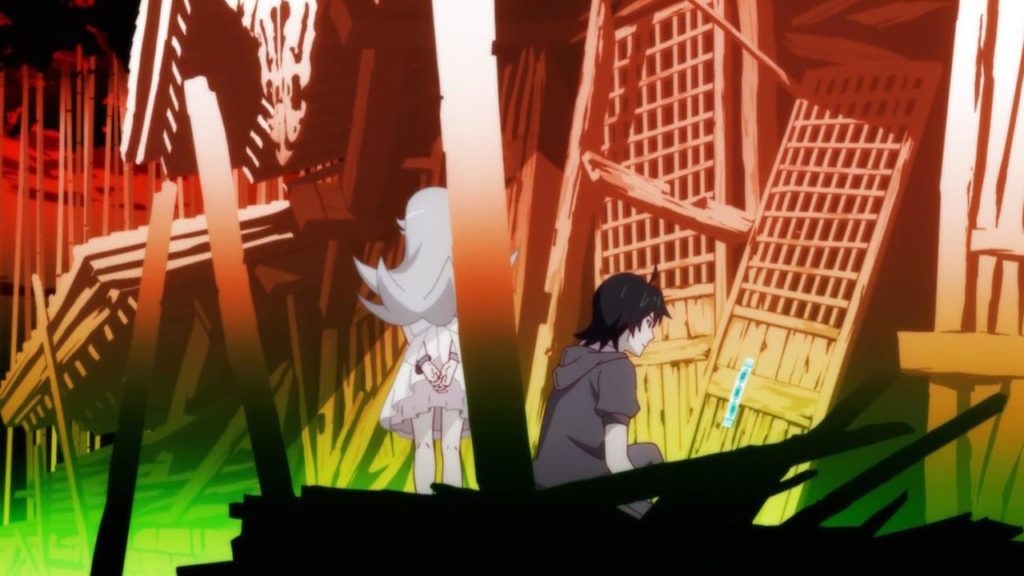
This arc can serve as a companion to Shinobu Time, as this really is about Shinobu and vice versa. The main issue I have with Kabuki lies in its inconsistent time-travel implication, and that is an essential part for this arc to work. It implies that as a result of Araragi saving Mayoi from car accident, he’d die by the event of Tsubasa Cat, thus Heart-under-Blade reverses back to her full vampire form and wreak havoc. It’s a bit too simplified in my view, as such crucial action from Araragi can have a much grander butterfly effect, way before the events that happened in Tsubasa Cat. For all I know, it might as well results in Araragi not meeting Heart-under-Blade in the first place. Other than that, it’s nice to see the adult Mayoi (bring out such a bittersweet feeling), it also brings the vulnerable side of Shinobu and you can further learn how much Araragi means to Shinobu, even without her saying so. The chemistry between Shinobu and Araragi is also solid as heck, one of my favorites actually. (Added bonus for loli Hanekawa).
14. Bakemonogatari II
[Nadeko Snake – Tsubasa Cat] / 7 episodes
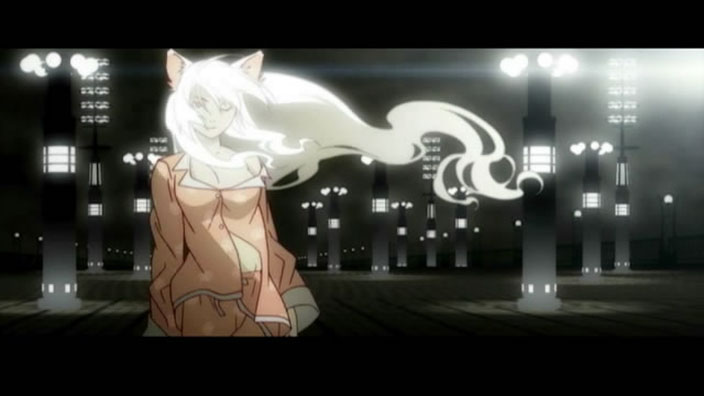
It comes to the point where I realize that I have watched both Nadeko Snake and Tsubasa Cat the least times out of all the arcs, meaning that they are far from those memorable chapters. Nadeko Snake is for me the most straightforward and weakest arc out of Bake (by design though, given Nadeko Medusa builds up on the shortcomings of this arc), and Tsubasa Cat takes too damn long to get to the point. Hanekawa’s own issue is reflected much more powerful in Neko: Black and Nadeko’s character comes off a bit weak compared to all the previous girls. These two arcs do boast a timeless dating scene between Araragi and Hitagi though, which I am sure for many Monogatari-fans it’s one of their favorite scenes. Also bonus point: Renai Circulation.
THE MIDDLE-RANGES
13. Nisemonogatari II
[Tsukihi Phoenix] / 4 episodes
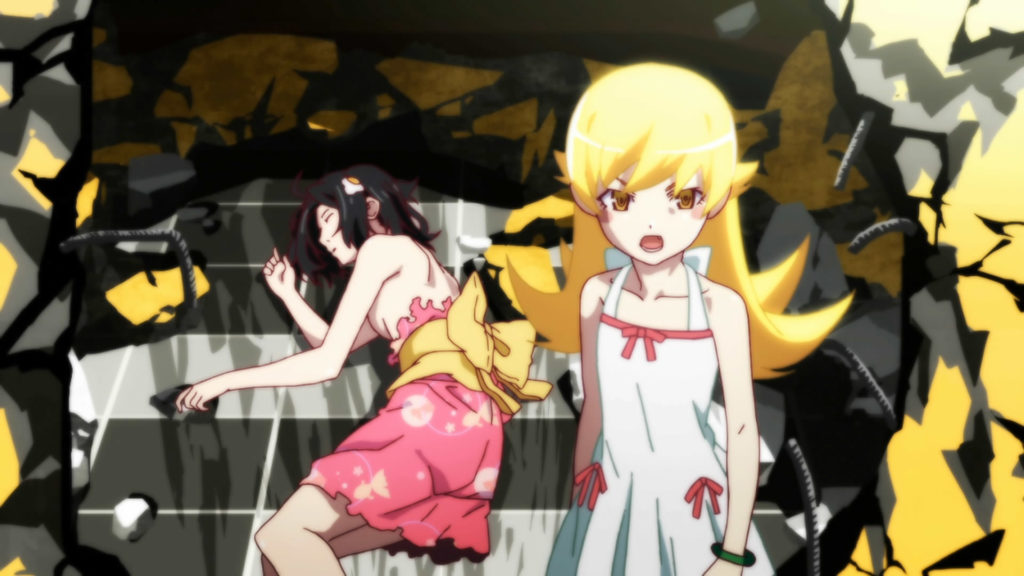
This arc is now infamous remembered for TOOTHBRUSH SCENE, but personally I’m more pissed about other things. You see, in the Light Novels of Nise Tsuhiki Phoenix and Karen Bee are roughly the same in length, here though Karen Bee arcs are nearly double in length compared to this poor one, and we have an entire pointless episode about the act of toothbrush on top of it. This toothbrush episode can honestly serve as a testing point whether you can stick with the franchise or not (personally, while fanservice is my least favorite element of Monogatari, I actually think this was done well). With only 3 episodes for an entire arc, it’s no wonder that they have to condense a lot of material, and honestly I feel they pull it off. I love Tsukihi as a character (although I am mixed on how NisiOisin treats her), and the twist smartly interweaves its “fake” theme and forces Araragi to pick sides. This arc also introduces Kanegui and Yotsugi, and boasts one of the best Monogatari OP that is Platinum Disco.
12. Onimonogatari
[Shinobu Time] / 4 episodes
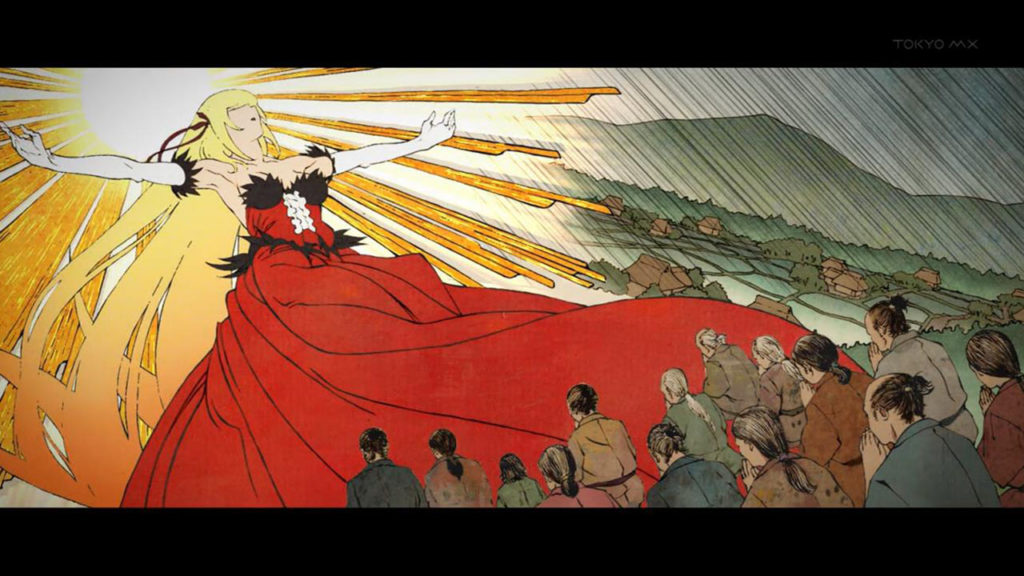
Oni is essentially a Mayoi arc. One one hand, this arc feels like a good opportunity for NishiOisin to cramp Araragi together with 3 loli non-human girls. On the other hand, the ending lands hard that it provides one of the most sentimental sequences out of all Monogatari. The Second season has consistently addressed the downsides Araragi’s martyrism, but none are more relevant than in Mayoi case. At first glance, it seems like the right thing for Araragi to save the lost girl, but at a cost of that she becomes an entity with no purpose. Monogatari series has a tendency to end strong and this might be the one ending where it redeems the whole arc. Otherwise, the show experiments with other art styles that mirror a storybook in Shinobu’s backstory is equally impressive.
11. Nekomonogatari Black
[Tsubasa Family] / 4 episodes
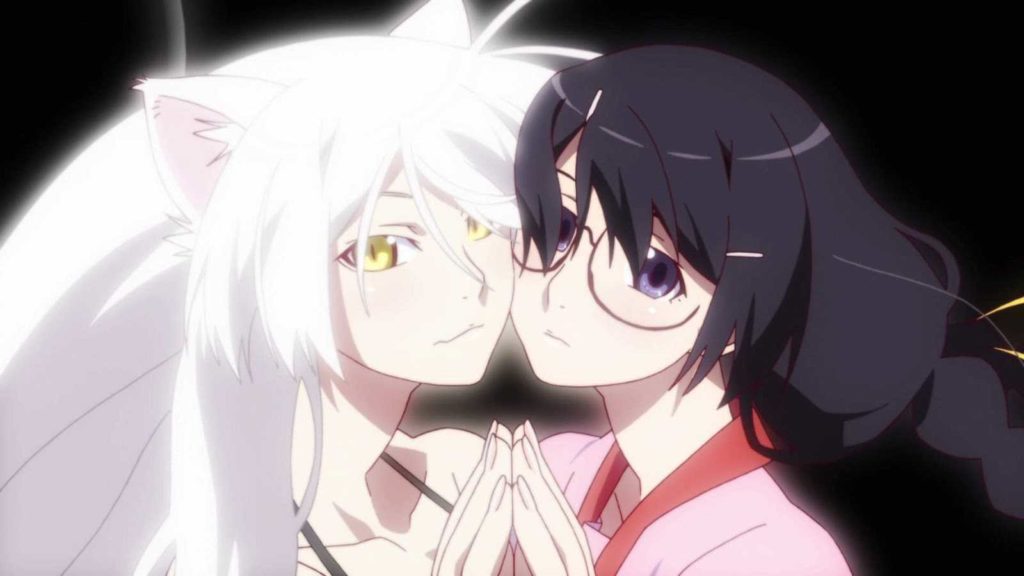
If Nise doesn’t stress this theme out enough, in Monogatari universe, it obsesses over the “fake” themes with its motto: there’s no reason the fake can’t do what the real thing would, and it’s possible for the fake to be more real than the real thing. In Neko Black, the series revisits that theme not by supernatural means, but by something much more grounded: family bond. Hanekawa lives in one of such “fake” dynamic: parents who don’t share any blood relative, nor do any love, and through the rest of its run, Araragi and her come to terms with what it means to be “in love” and “bond”. As such, this arc has some of its densest, and grounded of all Monogatari and the art understandably have more shades of black, dark scenes. It says something that one of its darkest moments is Araragi’s realization that Hanekawa doesn’t have her own bedroom. I must admit I still didn’t like Hanekawa character up until Neko White, still in this arc it did one hell of a purrfect job regarding Hanekawa’s backstory.
10. Nisemonogatari I
[Karen Bee] / 7 episodes
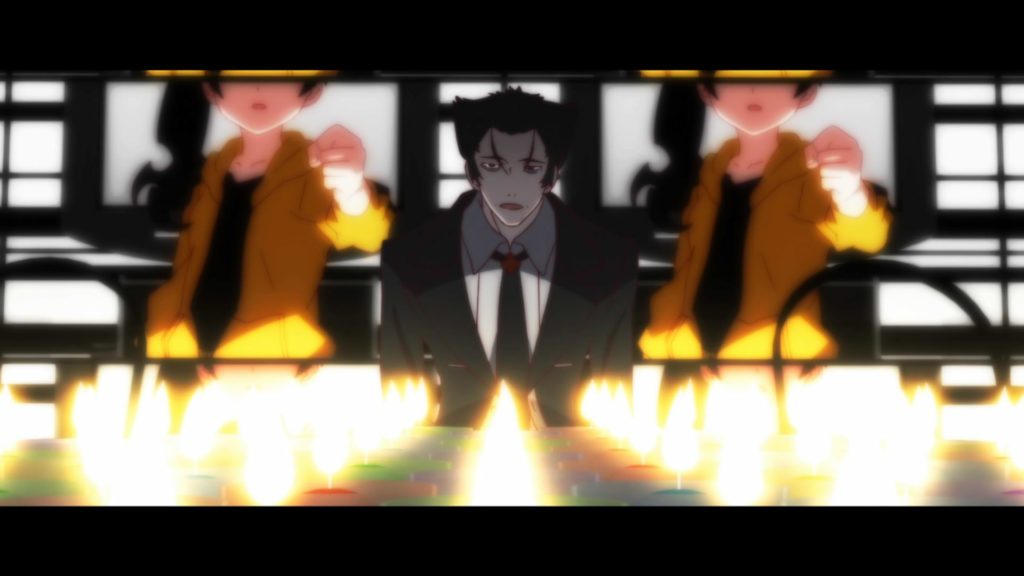
Well, with 7-episodes Karen Bee is one of its longest standalone arcs, and I can’t say that it earns this long runtime. I do, however, understand the decision to take a detour and revisit all the main girls before we learn what the hell is going on. This arc also works as a reminder on how terrifiedly awesome Hitagi can be, and it introduces one of the best girls and villains in this franchise: Kaiki. This arc is also known for improved animation, less experimental style in regards to Bake, and much, much more fan-service. As the main character for the arc, sadly Karen doesn’t do much as her personality basically overlaps Kanbaru. But damn, Kaiki demands our attention.
THE ESSENTIALS
09. Owarimonogatari II
[Shinobu Mail] / 6 episodes
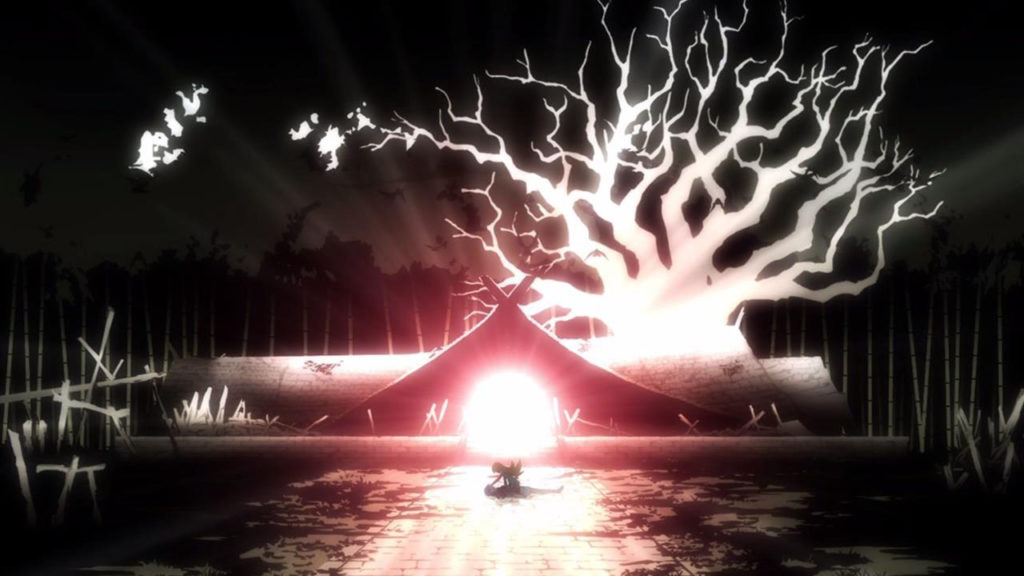
This arc takes its time (as do most Monogatari arcs) but once it’s on a roll there’s no stopping it. The showdown between Kanbaru and Shinobu remains one of the most powerful confrontations in all Monogatari arcs, especially how we can understand both sides of the arguments. Tap on to the central link between Araragi and Shinobu’s relationship, it also tells a bitter, tragic tale at the heart of relationship itself. Well, imagine you take 400 years to reform in order to claim your master back, just so that… everyone is after your tails, even the master. This arc is strengthened by some of my favorite girls (Kanbaru, Shinobu), and Araragi’s own conflicts help carrying its weight. It ends on the perfect note and truly, Kanbaru and Shinobu’s conversations still resonates with me even today.
08. Owarimonogatari I
[Ougi Formula- Sodachi Riddle- Sodachi Lost] / 7 episodes
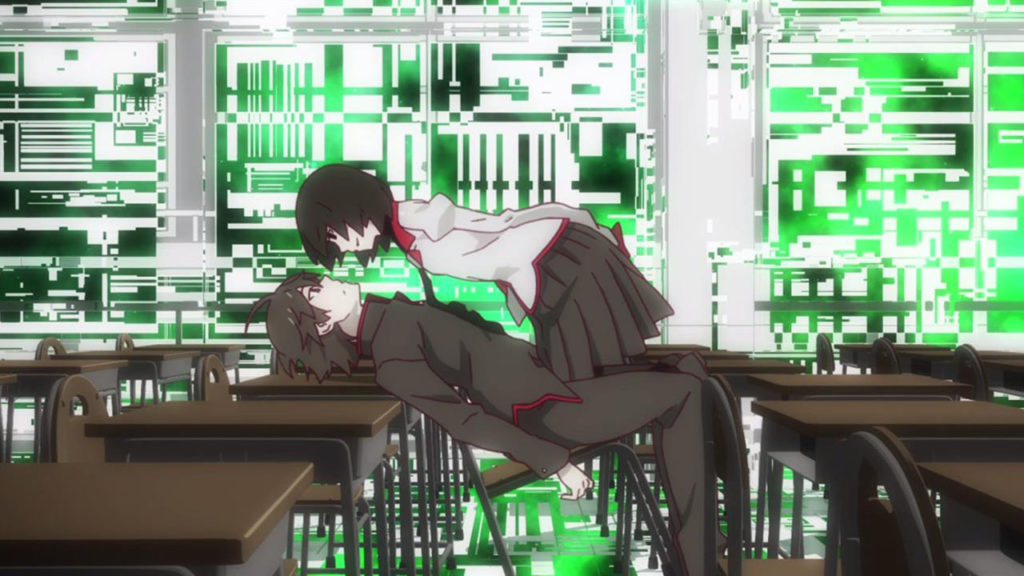
It’s a risky move to introduce a new character this late of a game (OwariMonogatari literally means End Story), and have her removed at the end of this arc is certainly turns some eyebrows, but the gamble pays off wonderfully because Sodachi character is just… something else. She’s borderline insane with such fierce hatred towards Araragi that never before Monogatari delves into such raw, tense territory. It reminds me bits of Ingmar Bergman’s psychology drama and that’s the best compliments that I could offer in any anime. Add to that, the narrative shuffles into that of mystery genre with classic whodunit and closed room with a supernatural twist that makes the show fun to watch. Moreover, the visual lens are at its most purposeful with many striking shots that inform you exactly the dynamic of these scenes (one glaring example, Ougi violates Araragi’s personal space in such a dominant manner). While we see how formidable Ougi was in previous arcs, this is the first time that her threatening nature comes in full force.
07. Nekomonogatari White
[Tsubasa Tiger] / 5 episodes
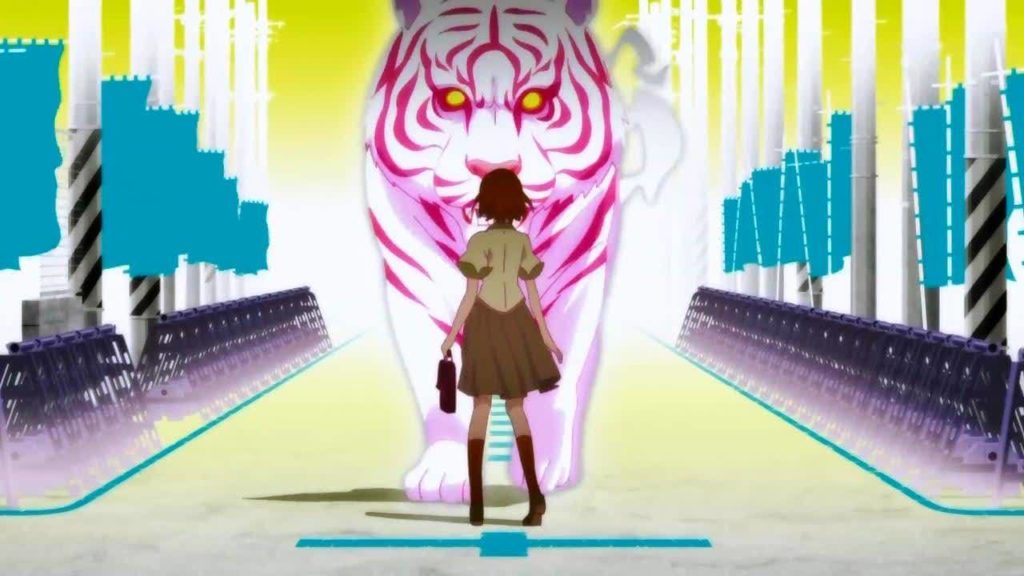
If you still read up to this point, you’ll realize that I am more fond of the arcs where the central narrative moves furthest away from Araragi. Araragi is not a complex character (a good story-teller though) and his perspective is usually peppered with hormonal thoughts and endless chatter-banters. Comes Neko White that breaks that patterns and give one of our girls a space to shine. From Araragi’s perspective, Hanekawa comes off as mysterious and somewhat uncanny. From her own perspective though, she comes off as another struggling teenager who downplays her self worth. It’s the only time Monogatari’s character busts out crying (when you compare to shows like AnoHana you know what I mean), but the crying here is legit since it marks the moment where she finally expresses her own feelings. Plus, Hitagi and Hanekawa’s exchanges are pretty solid, and it contains one of my favorite Monogatari screenshots ever.
06. Bakemonogatari I
[Hitagi Crab, Mayoi Snail, Subaru Monkey] / 8 episodes
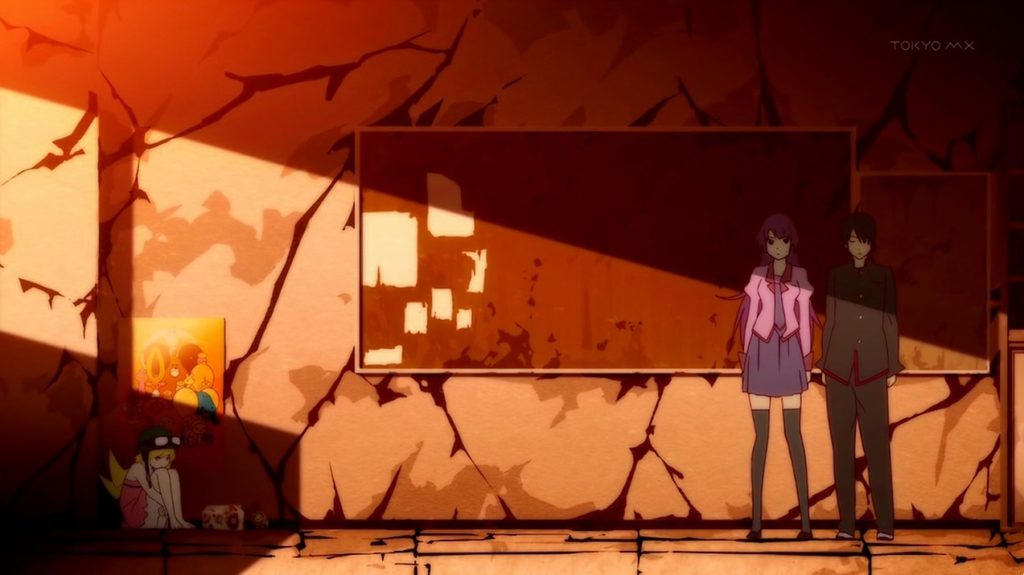
The beginning of it all – the girl falls down from the stairs. Even with a couple arcs that go before this chronologically, everything basically starts here, from the aesthetics the anime ultimately adapts, to all these characters that are still in fans’ minds after all these years. The mini-arcs are brief in nature, but we have a completely classics arcs of Hitagi Crab and Subaru Monkeys. Now, I know many point out that Mayoi Snail is their worst favorite arc, but for me that arc is done well. The supernatural twist works and I don’t have any real issues with Mayoi character.
Fun note: I remember the very first time I checked out Monogatari series where I have absolutely no clue what genre this show is. It starts with a panty shot, followed by vampire attacks and begins with a mundane conversation about festival activities. Damn, even now I can’t even tell which genre this show belongs to.
05. Otorimonogatari
[Nadeko Medusa] / 4 episodes
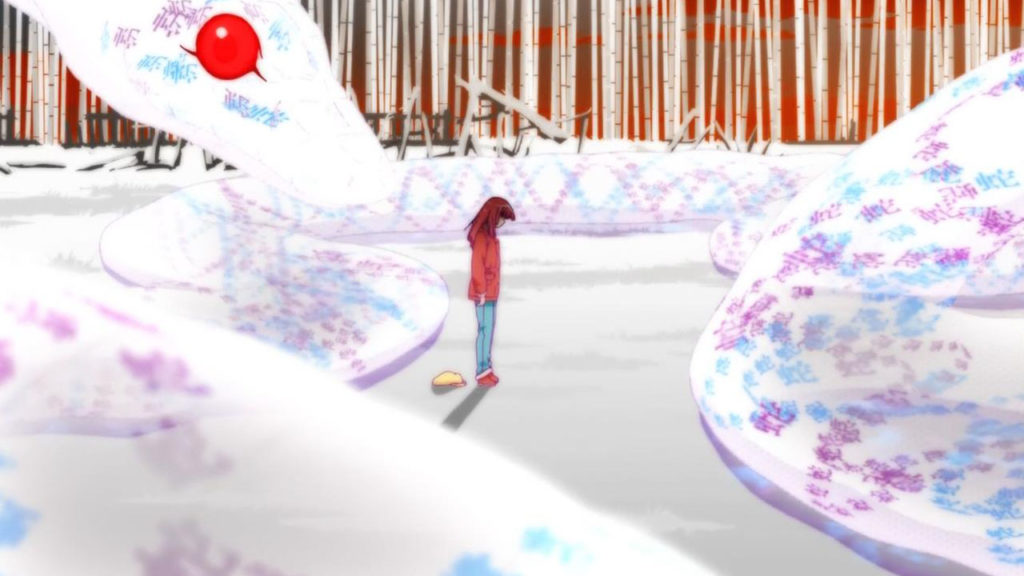
Like I said in Nadeko Snake, this arc builds on the foundation of shortcomings of that arc. In Nadeko Snake, she is a victim, a helpless imouto, Araragi comes in to save the day. LOOK WHAT THEY DO WITH THIS ARC. It has the best use of unreliable narration, and I swear I didn’t see that twist coming (even if the arc is bookended – by that point I totally forgot about the prologue). Told from the point of view of Nadeko, the art styles change as well. It’s one of the rare moments where we see the town – usually isolated and minimalist in Araragi’s eyes – actually have background characters. The transformation of Nadeko not only works in the grand scheme of narrative, but it also brings some neat character development from Nadeko herself. Characters in Monogatari are often struggling with their inner sides, and none is more clearly than this arc where the lines between the truth, the lie are blurred, but with a purpose.
THE INCREDIBLES
04. Owarimonogatari III
[Mayoi Hell – Hitagi Rendezvous – Ougi Dark] / 7 episodes
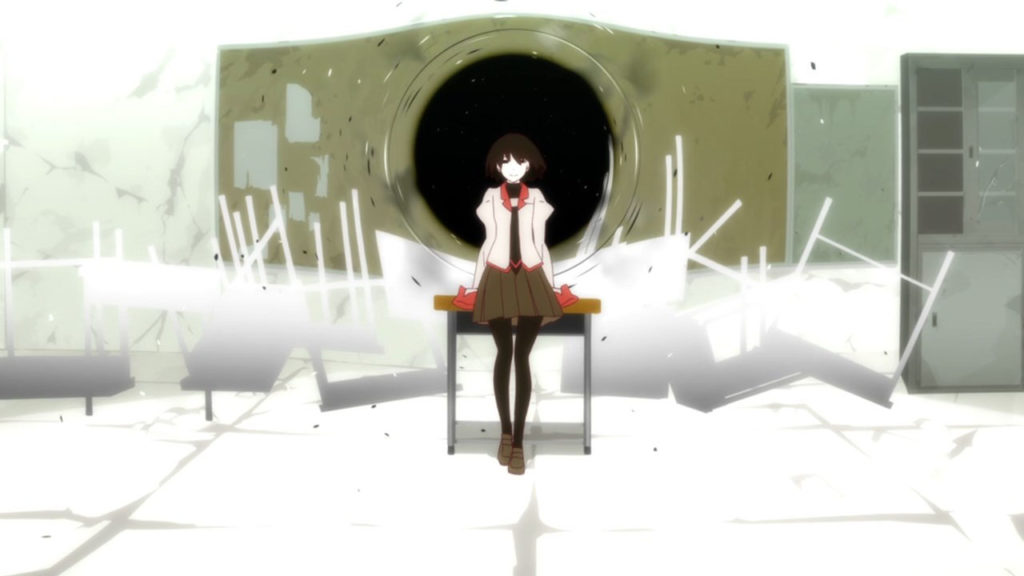
It’s remarkable that after teasing us for so long with more than a dozen independent arcs, it wraps up the best way it can, with all the pieces of the puzzle fall neatly into place. While this final arc content different smaller arcs – the Hitagi segment here is basically just a date, it still ends in an emotional satisfied note, all the more impressive that the climax is a one-to-one confrontation. Monogatari series has always been a show about growth, about characters who learn about themselves and embrace their dark side. Thus, isn’t it fitting that after saving all the girls, it’s time for Araragi to face his darkness and save himself? Growth, after all, is about acknowledgement. It’s until Araragi acknowledges his dark side that he’s truly become mature.
03.Kizumonogatari
[Koyomi Vamp] / 3 movies
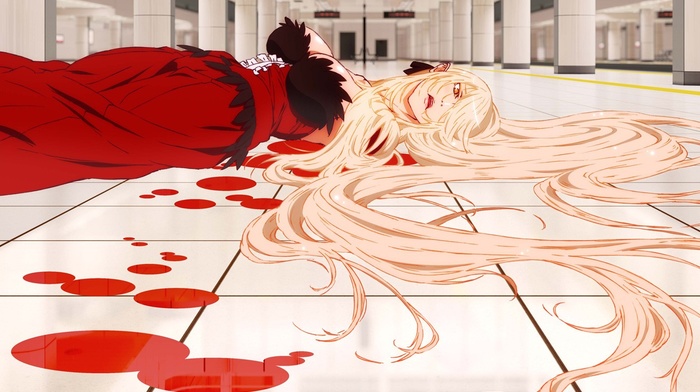
Kizu had become some sort of myth. Announced back in 2011 as the second book to be adapted, it took 5 long years for that to happen – in trilogy form – by Tatsuya Oishi, the guy who was behind Bake. It’s well worth the wait, though, as the films have some of the best animation from the franchise, and the updated character designs are a delight. It’s also the one time where the Monogatari series at its most… cinematic. Sounds obvious, but let me remind you that Kizu relies more on visual storytelling than narration, something that has become a trademark of the franchise. Kizu is also a tragedy, and Kiss Shot is the biggest tragedy of all. Kizu remains as one of the most polished, both in terms of visual and sounds, with a great story to boost. Even without those qualities, Kizu is perfect for fans and newcomers alike.
02. Hanamonogatari
[Subaru Devil] / 5 episodes
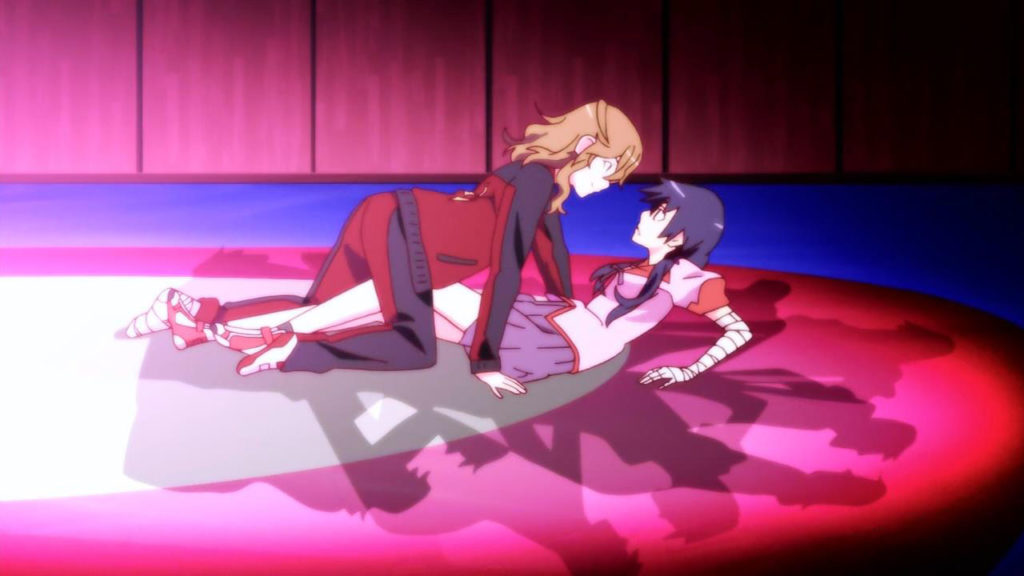
And now we’ve gotten to the arcs that I responds strongly to. Chronological-wise, Hana’s events happen last – way after the ending of the main events – and that carries the risk that it can’t bring the thematic weight of the main plot (just like in Zoku Owari). Not here, as Hana tackles many of Monogatari’s core themes with all the seriousness, thus the one stands alone better than most . It’s remarkable that before going to this arc I was skeptical of Kanbaru character and after finishing it, she became the most vibrant characters out of the entire cast. Monogatari doesn’t offer an easy way out for Kanbaru. Like Araragi, she’s torn between wanting to save others even though they don’t wish for it, and turning a blind eye. While Araragi doesn’t think twice about it, Kanbaru is deep enough to realize the shortcomings if she decides to interfere. Before that though, her fear that she was the predator, or her frustration that she continues to run until she collapses, are incredible heartfelt and in-character. Add to that, the visual in Hana remains the franchise’s most visually striking. Kanbaru is in constant struggles of finding who she is, at the end of this arc, she still yet to find the answer, but she knows who she doesn’t want to be. That’s what growing up is all about.
01. Koimonogatari
[Hitagi End] / 6 episodes
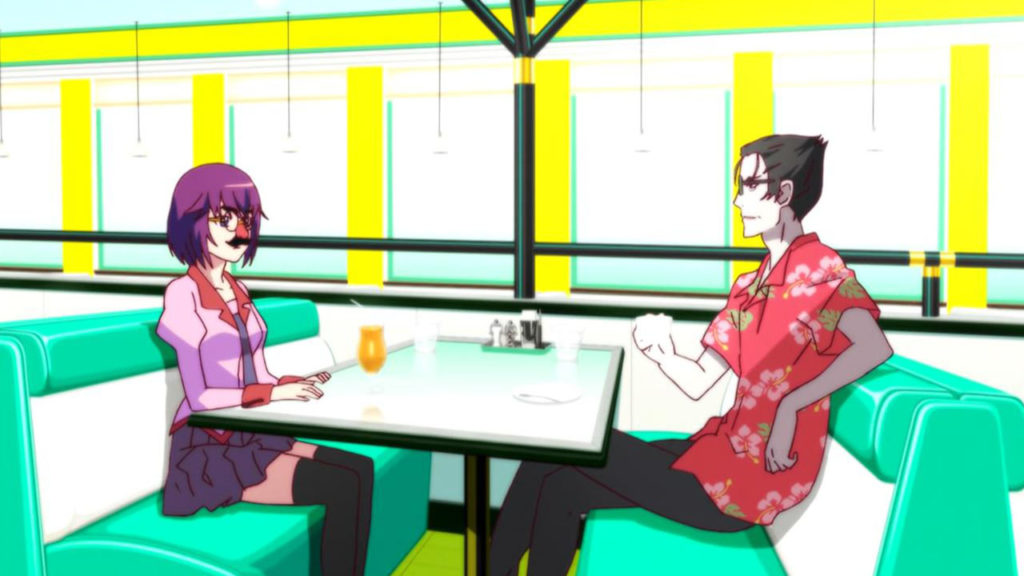
Finally, this arc earns its top spot because it constantly defies our expectations, and above that, solid from start to finish. You have a helpless young girl as victim and the master deceiver, right? How about switching their hero and villain roles? This arc is about Hitagi, right? How about gives that spotlight to the least character imaginable, Kaiki? All the risks paid off nicely, as Kaiki’s unique point of view and tone gives the show the energy that it never has. Despite as different in personalities as Kaiki and Nadeko can be, they are (and most of Monogatari’s characters) are defined by the inconsistencies in their characters. Kaiki never trusts people, but the whole act is driven based on his truth to Hitagi. Nadeko is easily influenced by others, but she never trusts anyone, including herself. That gap creates a strong dynamic between those two unlikely individuals, and words come from Kaiki’s mouth usually pack with strength that other characters don’t have. Add to that, the meeting between Hitagi and Kaiki remains the franchise’s most deadpan (and truly funny) moments, full of knock-out lines and wonderful deliveries. Monogatari Series arcs, like the show itself, are often a mixed bag. For all the thematic depth it tackles, for all the heartfelt character moments it delivers, there are pointless banters and sexual gags somewhere in between. Koimonogatari comes close to embrace all great qualities from the former, boasted by unique vision of Kaiki with very little of the latter and thus remains the high point of the Monogatari series.

Honestly good list bad reasoning, you over complaining about the fan service is just childish especially in tsukimonogatari part , that arc alone from a character point of view is deeper and adds more to the storg than any bakemonogatari arcs.
Find it funny how you criticize senjogahara character in the bottom ranking but praise her in the above ranking, you do realize that it came after right.
Reading this list you clearly dont understand monogatari.
I love Hitagi’s character, it’s the way Monogatari uses her that I’m not too sure about.. “Hitagi’s End” isn’t about her at all.
TLDR: she deserves more screen time than this.
I really like your list, I do not agree with all of your points, but most of it boils down to personal tastes so I lack the right of saying anything about it. But I really admire how you actually put Hanamonogatari in second place, the most overlooked arc in the series by far. People are not talking enough about it, and I believe it’s because they don’t understand it quite well or just didn’t pay attention. Though I am surprised how you didn’t mention how unreliable of a narrator Rouka is when talking about Hanadori’s story (which is actually hers).
Thanks Lunastras. Don’t worry, you have all the rights to disagree with my ranking since like you said it’s all about personal taste and I’m interested to hear your preference too.
Well, not only Rouka but “unreliable narration” or subjective lenses is one of the big parts in Monogatari franchise, so I don’t go in much details. Some even question whether Rouka were or just Kanbaru’s imagination since only she can contact Rouka, but I don’t mind either way, the emotional core is clearly there.
I never really thought about it like that, but Kaiki seems to have come in contact with her, so I would argue she did exist. But yea, the subjectivity in the monogatari novels is spot on and I applaud Nisioisin for managing to come up with a different writing style for all of the narrators. As for my opinion on the way I would rank the arcs, it wouldn’t be much different from yours, but I would put Kabuki a bit higher on the list. I feel like it is an arc that perfectly encapsulates the current dynamic between Araragi and Shinobu. They have long accepted the past, they realize that it is a part of them, and not only do they accept the fate that they are bound together, but they would not have it any other way. At least that’s how I feel. But again, I completely understand why you would feel it was not a necessary arc.
“thE SKipPaBlEs”
You can’t skip any arc of the story you absolute retard